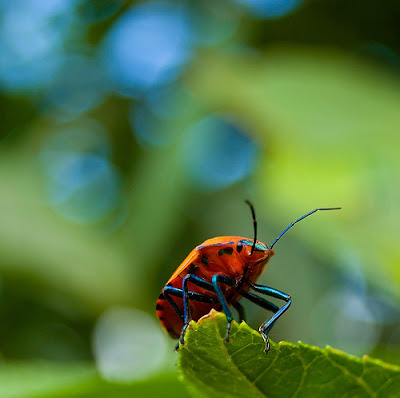Bokeh and DOF (depth of field) tips
Depth of field (DOF), refers to the area of an image that is in focus. You have most likely seen images where the main subject is in focus, while the background is out of focus or totally blured. The area that covers the focused area is the DOF (depth of field). Bokeh on the other hand, refers to the appearance of the light that is seen within the blured part of the photograph. Bokeh and DOF are important to consider for photographs when you need the main subject to stand out on its own and not be lost in background distractions.
Isn't Bokeh and DOF the same thing?
No, bokeh and depth of field is not the same thing, although they do work together.
- DOF is seen in a photograph where there is an obvious focus area, set against a blured background or foreground.
- Bokeh on the otherhand, refers to how your camera lens renders the light that is seen within the blured parts of the image. Sometimes this can be soft or harsh circular shapes, or look like hexagons, depending on your lens design and aperture settings.
Camera settings for bokeh and DOF
Important steps to achieving blurred backgrounds with good bokeh in most circumstances, is to have:
- start with a low aperture or f number as it's also known (see examples below)
- if you're using a telephoto lens, zoom it out to the longest length
- move in so your physically as close to the subject as your lens will allow you to be, yet still focus properly
- photograph subjects where the background objects aren't too close behind
- light of some sort, whether it be sunlight steaming through branches or street lights when doing a night portrait, will be helpful when shooting bokeh
Camera: Nikon D40
Lens: AF-S DX Zoom Nikor 18-55mm F/3.5- 5.6 G ED II (kit lens)
Exposure: 0.008 sec (1/125)
Aperture: f/5.6
Focal Length: 55 mm
ISO Speed: 200
Exposure Program: manual
Why the bokeh / DOF in this image worked
The shape of the bokeh also depends on the lens design. Some lenses are considered to result in a nicer bokeh than others. Usually the more expensive the lens, the nicer the bokeh. However, in most cases if you shoot the photograph so you're aiming towards some kind of light, then it will result in some form of circular bokeh like in the example above. In this case, there was sunlight shining through the leaves of the tree. This sunlight resulted in a circular bokeh. The blue color is caused from the blue sky above.



Please take a look at my paragliding pics and give me your opinion! Thanks!
ReplyDeleteThanks for your opinion Steve!
ReplyDeleteGood, detailed and simple explanation of bokeh and shallow depth of field. I just left some place where they discussed the Nikon D40 but gave a photo example from a Leica camera. (?)
ReplyDeleteI like shooting depth of field. Still learning. I have used metering on center weight or spot with good results too. Thanks for this focused article.
Hi. Vanessa. Thanks for the praise. If you have any question, do write me.
ReplyDelete